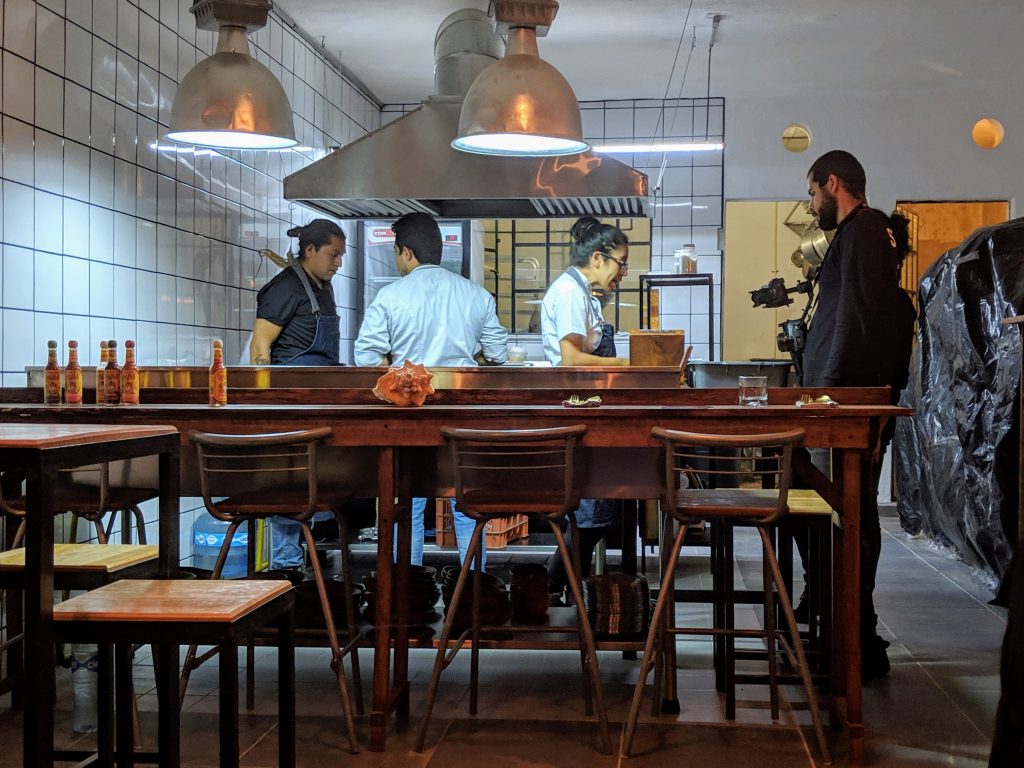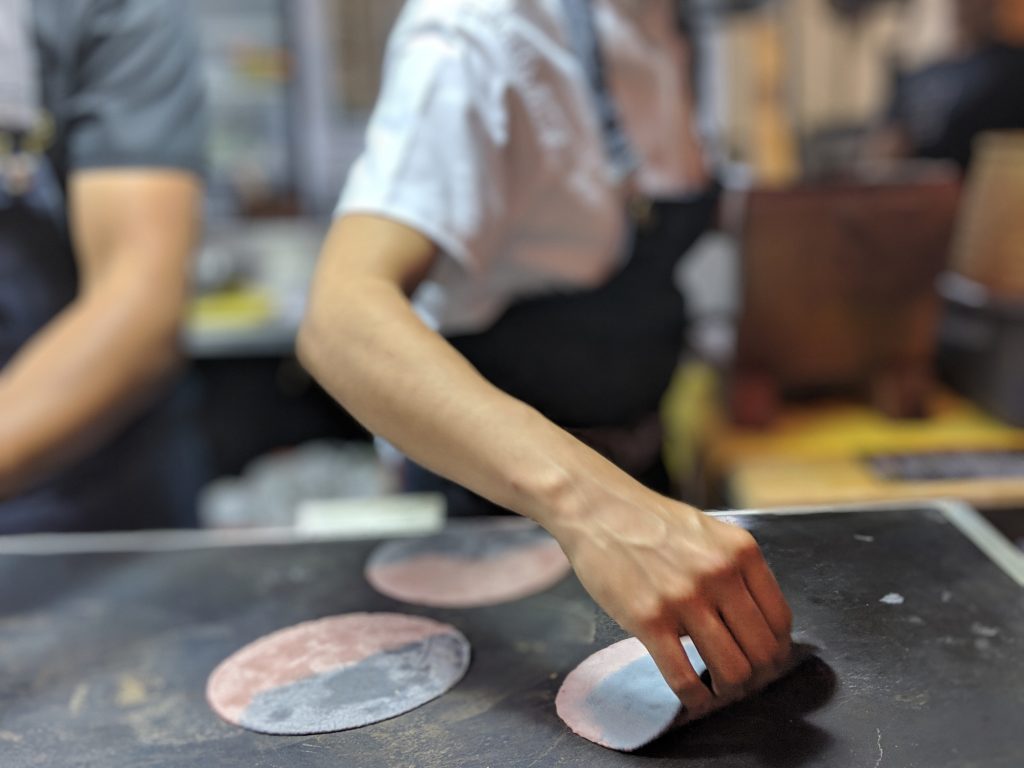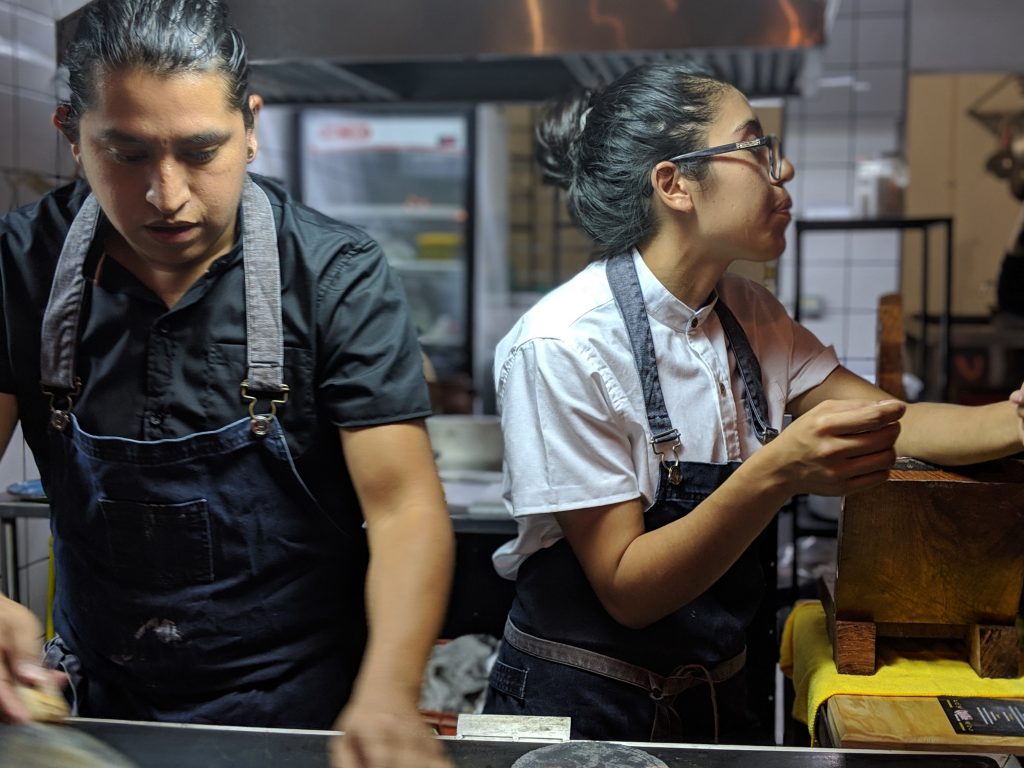Dining at Guadalajara’s New Restaurant, Xokol
Inspired by the tradition and conservation of Latin corn

Xokol, helmed by chefs Óscar Segundo and Xrysw Ruelas Díaz, is a small, tasting menu restaurant in the Santa Teresita neighborhood of Guadalajara, Mexico. The menu, which changes weekly, is rooted in the conservation of Latin corn and the chefs (who also happen to be married) are bridging the gap between ancestral, endemic ingredients and modern dishes. Their work is archival, artisanal and expressive. Every ingredient is carefully sourced, intelligently used and delicious. Though you won’t find tacos or burritos on the menu, rather they offer food that predate the second-wave iterations of tortilla-based dishes. Here, the tortilla isn’t merely a vessel for the ingredients inside, it’s the star of the show.
This is the “pre-hispanic Mexican diet,” Segundo (who recently won the San Pellegrino Award for Best Young Chef in Central America and the Caribbean) explains to us, a few feet from their kitchen. “Everything comes from the corn. This is how my grandmother used to eat.”

In an introduction that prefaces the meal, Díaz explains that most of the corn grown in Mexico today is GMO. But at Xokol, they’re working to conserve the traditions of people like Segundo’s grandmother, who is immortalized in a mural in the restaurant’s dining room. The variations in Latin corn, as evident in their dishes, are in color and flavor.

“All we make here is from Latin corn. All of the corn comes from where Oscar’s family comes from. In Oaxaca and Guadalajara, all of the corn is modified. So, we tried to turn to our heritage,” Díaz says. As she hands out pink- and blue-hued tortillas, she explains that the corn is originally black and red, but that during the process of turning the crop into flour the tortillas naturally fade. The final product is ultimately in the same vein as more commercial-looking tortillas, but made using ingredients more akin to those traditionally eaten—and harvested.
“When you arrive at home,” Segundo explains, “if they’re making tortillas, it is tradition to offer one to tell you, ‘You’re welcome here.'”

As Segundo and Díaz work in unison behind the griddle-like top, they have a cohesiveness that matches in effort and knowledge. On a few occasions they each know the exact moment the tortilla needs flipped (even when one is looking away) and bump hands when reaching in. When they speak before handing out the next round of dishes, the two unfold various stories about Mexico, and the way the country inspires the intricacies of the dishes—almost as if it is a screenplay.

“This next dish is inspired by a time in Mexico, the Mexican Revolution,” Segundo says before handing out a fried tortilla, topped with smeared beans and crumbled cheese—to be paired with a side of vibrant green salsa. “This next dish is made on the rocks. It has chile de uña, which means ‘nail chili.’ During the revolution, the women had to do a lot of stuff for the men. They would prepare the meals and the salsa, and they had no tools. They would cut with their nails.”
The service is familial; the chile de uña is passed around as demand arises. Another course, chicken cuachala (a stew made from tiny red tomatoes, chiles, peanut mole and chicken), is served in a small bowl that one barely needs two hands to hold. Segundo appears from behind the stove with a pile of freshly made tortillas. He encourages everyone to roll the tortilla into a straw-like shape, to take a bite and then lift and sip from the bowl—with tortilla still inside. Slurps sweep the room, it’s pure joy—the dish is the best of the night.

Other courses feature ingredients the pair have foraged or obtained from local purveyors, but the keystone is always the corn. Díaz is rarely seen away from her post—she spends the bulk of the evening pressing fresh tortillas and tossing them onto the stovetop. She’s a master: each one is a different color, but identical in size and thickness.

Even the drinks, exquisite on their own, accentuate the boundlessness of corn. Pozol, a traditional drink that dates back to pre-Columbian Mexico, is made from fermented corn dough, water and cocoa. Dessert is burnt milk ice cream topped with a corn wafer, popcorn and dusted with the ashes of corn. It’s a sweet and salty dessert that does best when all components are represented in one bite.
Though the restaurant is operable at a bare minimum right now, the space will open to the public this weekend, on 27 October. It’s hard to imagine the space opening without notice. Locals and visitors alike will revel in the availability of fresh, delicious tortillas and traditional dishes—and the old-worldliness of the entire experience.

Remembering how Segundo prefaces the evening, “Here you’ll taste our part of Mexico,” gives perspective to the their ambitions.
Xokol (Calle Ignacio Herrera y Cairo 1392) opens this weekend, 27 October.
Images by Evan Malachosky












